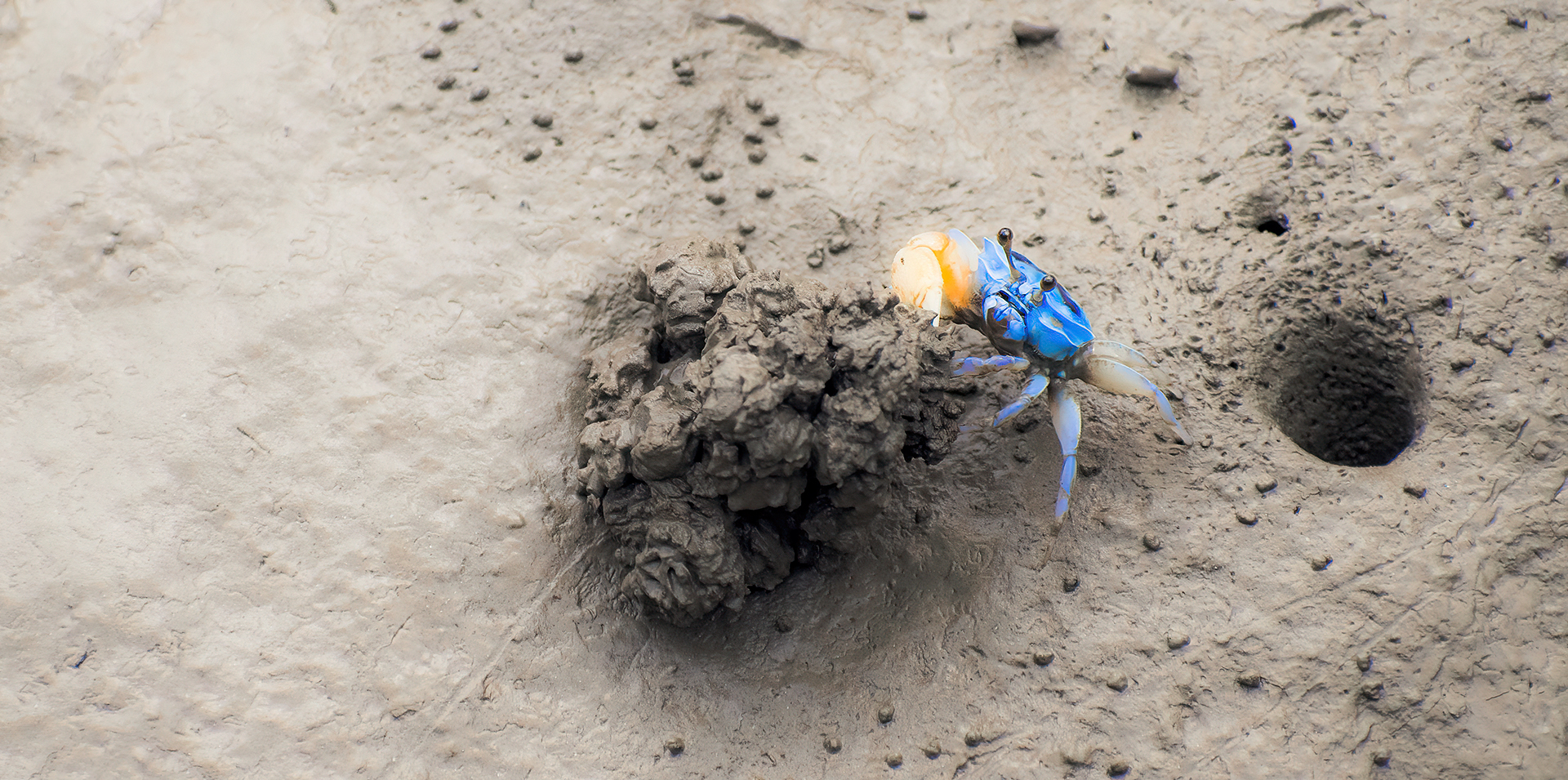
Fiddler crabs, also known as calling crabs belonging to the Ocypodid family are known for their sexually dimorphic claws; the males have one claw larger than the other claw and the female have both claws of the same size.
The photographs in the blog were taken in Sundarban, West Bengal, India during the monsoon. These crabs are found in abundance in the Sundarbans. They are of varying colors and tend to live in concentrated groups.
Fiddler crabs are primarily found in intertidal zones, where land and water meet. They typically inhabit mudflats, marshes, and mangroves, and are adapted to living in areas that are periodically submerged by the tides. They are found in large numbers along the muddy banks of the Sundarbans, where they burrow into the soil and create intricate networks of tunnels and they use them to hide from predators and to regulate their body temperature. Fiddler crabs are also known for their ability to tolerate high levels of salinity, which makes them well-suited to life in brackish waters.

Fiddler crabs are highly social creatures that live in large groups called “casts.” The male fiddler crab is known for its oversized claw, which it uses to attract mates and defend its territory. The female fiddler crab has smaller claws and tends to be less colorful than the males. The females also use the size of the male’s claw as an indicator of their health and strength. Fiddler crabs are also known for their ability to regenerate their claws if they lose them in a fight or other mishap.

One of the most fascinating aspects of fiddler crab behavior is their daily routine of waving their claws in the air. This behavior is not just for show – it actually serves a practical purpose. The crabs use their waving claws to communicate with each other and establish territory. The males wave their larger claws to attract females, and the females respond by waving their smaller claws in return.
Fiddler crabs are also an important part of the ecosystem of the Sundarbans. They help to aerate the soil with their burrowing, which allows oxygen to reach the roots of the mangrove trees. They also serve as a food source for many other animals in the area, including birds, fish, and larger crabs.
These creatures, however small they might be, plat a valuable part of this delicate ecosystem. By studying and understanding these amazing creatures, we can gain a greater appreciation for the diversity and complexity of life on our planet.

Leave a comment